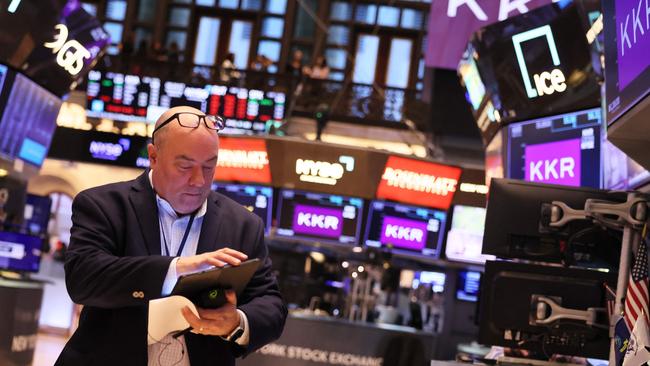Federal Reserve’s response to US jobs data to test sharemarkets
The outcome of US jobs data on Friday looks set to determine whether the Federal Reserve lifts rates by 25 basis points or 50 after its meeting later this month.

Its crunch time for the US sharemarket as non-farm payrolls data looms.
Will the sharemarket stop looking across the valley of a looming US recession and accept – as the bond market has done – that economic resilience means more interest rate rises and high inflation will stop the Fed from coming to the rescue at the first sign of a downturn?
Together with next week’s CPI and PPI data, the outcome of the US jobs data on Friday looks set to determine whether the Fed lifts rates by 25 basis points or 50 after its meeting the following week.
A reacceleration of the pace of rate rises by the Fed to 50bps might cause something of a capitulation by bulls including retail accounts that have been excessively bullish in recent months, even as institutional investors have been too bearish.
It’s a year since the current rate rise cycle started, when the Fed lifted rates from a record low range of zero to 25bps, and bringing inflation back to target has been much harder than expected.
On Wednesday, market pricing for the terminal Fed funds rate remained near a cycle high of 5.7 per cent, and the 10-year bond yield was close to 4 per cent.
But the S&P 500 was trading around the same levels it was at 10 months ago – when the market mistakenly thought the Fed would pause around 2.6 per cent by the end of 2022 and the 10-year bond yield was trading around 2.9 per cent.
A sharp sell-off in shares came on Tuesday, when Fed chairman Jerome Powell acknowledged that recent US economic data had been overall stronger than expected, which “suggests that the ultimate level of interest rates is likely to be higher than previously anticipated”.
“If the totality of the data were to indicate that faster tightening is warranted, we would be prepared to increase the pace of rate hikes,” Mr Powell said.
In the second round of his congressional testimony on Wednesday, Mr Powell said: “I stress that no decision has been made on this” in regard to how much interest rates could rise this month.

Clearly, if the data surprised positively, the market would expect the Fed to lift rates by 50bps and the terminal Fed funds rate pricing potentially would keep rising towards 6 per cent.
Meanwhile, more US economists predicted a rate rise of 50bps this month, with Citi being the latest to do so.
Recent options bets on a 6 per cent Fed funds rate make more and more sense.
Data including ADP private sector US payrolls and the weekly JOLTS job openings report surprised positively, consistent with the positive data surprise highlighted by Citi’s US economic surprise index.
And there was no pushback from Democrats on Fed rate rises, “suggestive of a still broad political consensus for rate hikes given the persistence of elevated inflation”, noted NAB’s head of market economics, Tapas Strickland.
“Of course that also means greater risk of recession.
“In this respect the two to 10-year US bond yield curve inverted further to -109.4bps.”
The US bond yield curve is the most inverted in about 40 years.
Better-than-expected economic data and the subsequent rise in inflation expectations could well throw a wrench into Mr Powell’s “disinflation view”.
Canaccord chief US equity strategist Tony Dwyer said significantly better than expected US economic data since mid-January had lifted the US breakeven inflation rate above 200bps.
“Of course, there can be oversold bounces in risk assets along the way, but the combination of a historically high level of US Treasury yield curve inversions, record low money availability, manufacturing contraction, and probably a rise in the unemployment rate points to recession in late 2023,” Mr Dwyer said.
He noted that the S&P 500 had never set its “bear market” low before a recession started.
Also, the bottom-up consensus estimate for S&P 500 earnings in 2023 has already been revised down sharply over the past year and “probably has further to go, especially if a recession appears imminent”.
The bottom-up EPS estimate stands at $US221, versus his estimate of $US210.
Mr Dwyer said the 12-month forward earnings per share estimate for the S&P 500 had turned negative for the sixth time in the past 40 years.
“If the economy does move into a recession, our estimate has downside below $US210 per share due to further margin compression,” Mr Dwyer said.
“The S&P 500 has never experienced a double-digit operating margin in a soft landing, much less in a recession.”






To join the conversation, please log in. Don't have an account? Register
Join the conversation, you are commenting as Logout